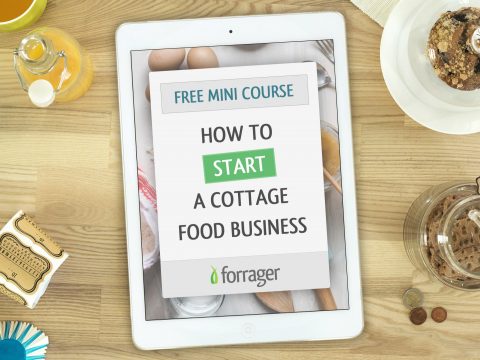Montana Cottage Food Can you legally sell food from home in Montana?
Cottage Food Law
In 2015, Montana passed their first cottage food bill (HB 478), which is explained on this page.
However, they now have a newer law, the Montana Local Food Choice Act (SB 199), also known as their food freedom law. That law almost entirely replaces this one.
The only reason someone would use this cottage food law instead of the food freedom law is if their homemade food products would be consumed at a location other than a:
- Private home
- Traditional community social event
- Defined as “an event at which people gather as part of a community for the benefit of those gathering or for the benefit of the community”
- Such as a farmers market, wedding, funeral, church or religious gathering, school event, potluck, neighborhood gathering, club meeting, youth/adult outdoor club/sporting event, etc.
- Food establishment
- Such as restaurants, cafes, etc.
Although this law has been almost entirely replaced, at the time of its passage in 2015, it was a major leap forward for Montana, allowing all forms of in-person sales within the state. Prior to this cottage food law, Montana only allowed some types of homemade goods to be sold at farmers markets.
To use this law, cottage food operators need to register with their local health department for a $40 fee, unless they only want to sell at farmers markets. However, the application is very extensive, requiring detailed plans for all products and processes. Fortunately, many types of food are allowed and there is no sales limit.
Selling Where can you sell homemade food products?
For most venues, you would be better off selling under Montana’s food freedom law.
If you are selling at venues other than a farmers market, you need to have your certificate of registration on-hand, in case a health authority asks for it.
Allowed Foods What food products can you sell from home?
You can sell more types of products by using Montana’s food freedom law.
More information about allowed cottage foods can be found in ARM 37.110.503. Other non-perishable items may be allowed on a case-by-case basis. Contact your local health authority to determine if your product is allowed.
Only certain types of jams, jellies, preserves, fruit butters, and dried fruits are allowed. More details about those products can be found in the Recipes section of the permit application.
You can also sell hot coffee and hot tea (without fresh milk or cream) at a farmers market.
Contact the Department of Livestock if you want to sell pet food or animal feed.
Limitations How will your home food business be restricted?
Business What do you need to do to sell food from home?
To register, you need to submit a permit application to your local environmental health department, which costs $40. Registration does not need to be renewed, but you must re-register if you add/change products or move to a different home. Registration is not required if you only sell at farmers markets.
The application is very lengthy, requiring many detailed plans:
- Recipes
- Includes all variations of recipes you’ll use, along with ingredient lists, measurement amounts, and directions
- Production Process
- Includes all processing steps you take, along with equipment you use, that aren’t included in your recipes or packaging
- Packaging
- Includes all packaging you use and how you package your products
- Labels
- Includes a copy of a label for each recipe
- Cleaning Process
- Includes when and how equipment and surfaces are cleaned, along with how you prevent allergen contamination
Other registration requirements can be found in ARM 37.110.511.
If your application is approved, you will receive a certificate of registration, which you must keep with you while selling to the public.
If your home uses a private well or non-public water source, it must be tested by a certified laboratory to prove that the water is safe.
Labeling How do you label cottage food products?
Chocolate Chip Cookies
"Made in a home kitchen that is not subject to retail food establishment regulations or inspections"
Forrager Cookie Company
123 Chewy Way, Cookietown, MT 73531
Ingredients: enriched flour (wheat flour, malted barley flour, niacin, iron, thiamin mononitrate, riboflavin, folic acid), butter (cream, salt), semi-sweet chocolate (sugar, chocolate, cocoa butter, milkfat, soy lecithin, natural flavors), brown sugar, granulated sugar, eggs, vanilla extract (vanilla bean extract, alcohol, sugar), baking soda, salt (salt, calcium silicate)
Contains: milk, eggs, wheat, soy
NET WT 2 lb 4 oz (1.02 kg)
If a nutritional claim is made (e.g. “low fat”), a nutrition facts panel must be included on the label.
More labeling guidelines can be found in the Labeling section of the permit application, as well as ARM 37.110.504.
Workplace Are there any home kitchen requirements?
Food and equipment may only be stored in the registered area of your home.
There are many workplace and hygiene requirements listed in ARM 37.110.506, 37.110.507, 37.110.508, & 37.110.510.
Resources Where can you find more information about this law?
- Department
- Public Health & Human Services
County Health Departments
- September 2015
- ARM 37.110.5
- October 2015
- HB 478
Montana’s path to a cottage food law was unlike any other state.
In 2013, they passed a bill (HB 630) that required the relevant departments to study the current food situation in the state, compare it to common standards, and make recommendations for improvement.
The study was published in May 2014 and heavily focused on the development of a cottage food law, with very specific recommendations about how that law would be implemented. This cottage food law follows those recommendations very closely.
